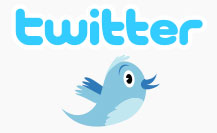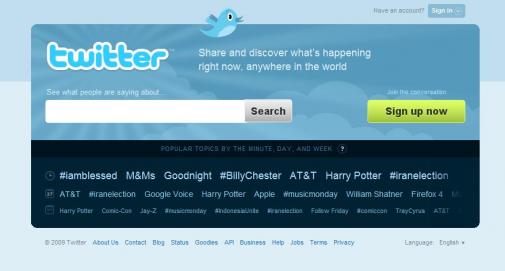



|
[While Twitter sits within the Social Media realm, its relevancy to current media life warrants a closer look at this phenomenon of its own accord.] News
Headlines are no longer strictly confined to paper. This
is an example of a Twitter Feed. >>> |
|
| In a Nutshell: Twitter is a microblogging site, which means people can publish their activities in 140 characters, which is a sentence or two. In kicking
off Twitter’s Chirp developer conference on April 14,
2010, the company finally revealed its long mysterious registered
user number... 105 million, or to be exact, 105,779,710. The
growth’s not over either — Twitter says they’re
still adding 300,000 users per day. (Mashable) |
|
| Definition of Twitter | |
| Twitter is a social networking and microblogging service that enables its users to send and read messages known as tweets. Tweets are text-based posts of up to 140 characters displayed on the author's profile page and delivered to the author's subscribers who are known as followers. Senders can restrict delivery to those in their circle of friends or, by default, allow open access. Source To avoid the need for splitting text messages into multiple parts, the creators of Twitter capped the length of a tweet at 140 characters. Source |
|
| History of Twitter | |
|
Since its creation in 2006 by Jack Dorsey,
Twitter has gained notability and popularity worldwide. The use
of Twitter's application programming interface for sending and
receiving text messages by other applications often eclipses direct
use of Twitter.
What
we have to do is deliver to people the best and freshest most
relevant information possible. We think of Twitter as it's not
a social network, but it's an information network. It tells people
what they care about as it is happening in the world.
|
|
| Examples of Twitter (or rather, Tweets) | |
| The Personal Benefits of Twitter | |
|
|
|
|
| The Basics of Getting Set Up With Twitter | The Negatives |
|
|
| More Resources | |
Sarah
McNabb - CMNS 545: Communication & Technology - 2010 |









